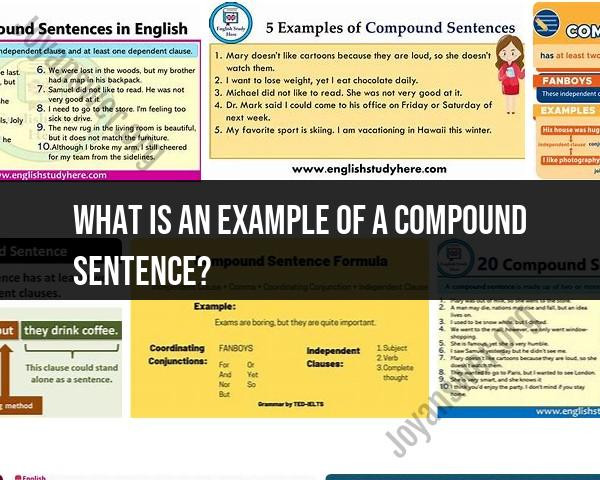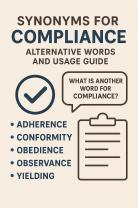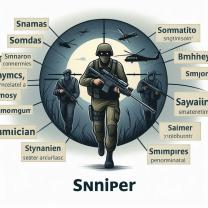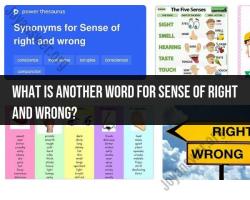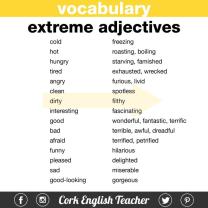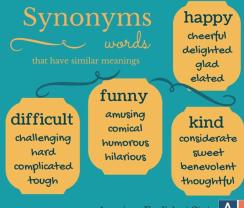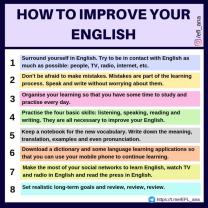What is an example of a compound sentence?
Here is an example of a compound sentence:
"The sun was shining brightly, and the sky was clear."
In this sentence, two independent clauses, "The sun was shining brightly" and "the sky was clear," are connected by the coordinating conjunction "and." This creates a compound sentence where two related ideas are joined together.
Examples of Compound Sentences: Understanding Complex Structures
A compound sentence is a sentence that is made up of two or more independent clauses joined together by a coordinating conjunction. Coordinating conjunctions are words such as "and," "but," "or," "nor," "for," "so," and "yet."
Here are some examples of compound sentences:
- The sun was shining, and the birds were singing.
- I like pizza, but I prefer pasta.
- You can go to the park, or you can stay home.
- I didn't study for the test, nor did I get a good grade.
- I'm tired, so I'm going to bed.
- I'm not sure what to do, yet.
Compound sentences can be used to create a sense of balance and symmetry in writing. They can also be used to add variety and interest to writing.
Identifying Coordinating Conjunctions in Compound Sentences
Coordinating conjunctions are the words that are used to join independent clauses together in compound sentences. The most common coordinating conjunctions are "and," "but," "or," "nor," "for," "so," and "yet."
Here are some examples of coordinating conjunctions in compound sentences:
- I like to read and I like to write.
- I'm going to the store but I'm not sure what I'm going to buy.
- You can have a cookie or you can have a piece of cake.
- I didn't go to the party nor did I call to say I wasn't going.
- I'm not feeling well, so I'm going to stay home.
- I'm not sure what to do, yet.
Building Compound Sentences for Clarity and Variety
Compound sentences can be used to create clarity and variety in writing. By using compound sentences, writers can avoid using too many simple sentences, which can make writing seem choppy and unsophisticated.
For example, the following sentence is a simple sentence:
- The dog was barking.
The following sentence is a compound sentence:
- The dog was barking, and the cat was meowing.
The compound sentence is more clear and informative than the simple sentence. It tells the reader that two things were happening at the same time: the dog was barking and the cat was meowing.
Advanced Compound Sentences in Writing and Communication
In addition to basic compound sentences, there are also a number of more advanced types of compound sentences. These include:
- Correlative conjunctions: Correlative conjunctions are pairs of words that are used to join independent clauses together. Some common correlative conjunctions include "either...or," "neither...nor," "both...and," "not only...but also," and "just as...so too."
For example:
Either you can go to the store, or you can stay home.
Neither did I go to the party, nor did I call to say I wasn't going.
Both the dog and the cat were barking.
Not only was the dog barking, but he was also growling.
Just as the sun was setting, so too was the moon rising.
Polysyndeton: Polysyndeton is a literary device in which coordinating conjunctions are used repeatedly in a series of words, phrases, or clauses.
For example:
I came, I saw, I conquered.
She was young, she was beautiful, she was innocent.
He was tall, he was handsome, he was charming.
Asyndeton: Asyndeton is a literary device in which coordinating conjunctions are omitted between words, phrases, or clauses.
For example:
- The rain came, the wind howled, the trees bent.
- He ran, he jumped, he flew.
- She laughed, she cried, she screamed.
Punctuation and Formatting in Compound Sentences
Compound sentences are typically punctuated with a comma before the coordinating conjunction. However, there are a few exceptions to this rule.
For example, if the two independent clauses in a compound sentence are very short, a comma may not be necessary.
- I'm tired and I'm going to bed.
Additionally, if the two independent clauses in a compound sentence are joined by the coordinating conjunction "and" or "but," a comma may not be necessary if the second independent clause begins with a subordinating conjunction.
- I'm tired and because I'm tired, I'm going to bed.
In general, it is best to use a comma before the coordinating conjunction in a compound sentence.
